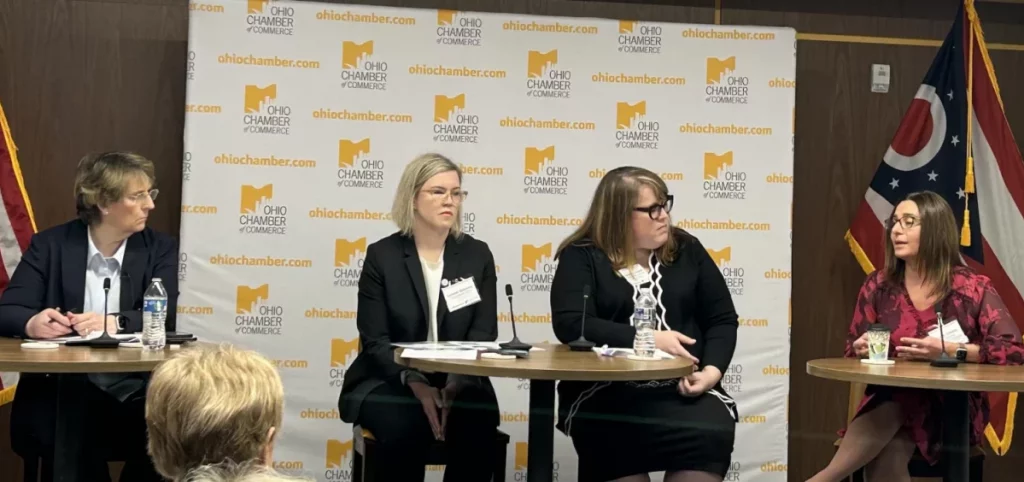News
As a childcare conundrum confronts Ohio parents, Ohio businesses seek to attract workers
By: Jo Ingles | Statehouse News Bureau
Posted on:
COLUMBUS, Ohio (Statehouse News Bureau) — Employers throughout Ohio say they cannot find enough employees to meet their needs, particularly low-wage workers. And childcare is one big reason why.
The Ohio Chamber of Commerce’s Rick Carfagna said the lack of affordable and available childcare is the main reason cited by people for staying out of the workforce.
“When it comes to childcare in Ohio, it’s too scarce and when you can find it, it’s too expensive,” Carfagna said.
Carfagna, who’s a Republican former state lawmaker, said some bigger companies have established their own facilities or allowed for subsidies for employees who need childcare for their kids. But he said many businesses cannot do that.
“48% of small business owners have said the lack of available or affordable childcare has affected their ability to attract, recruit, and retain employees,” Carfagna said.
The problem of finding affordable childcare is so significant that the chamber hosted a forum lately to bring advocates and businesses together to figure out what can be done to alleviate the problem – especially now when parts of Ohio are expecting to see massive growth due to new companies locating in the state in the near future.

“The first ten dollars of your wage will go to childcare without any, if you do not receive or are not eligible for any public support,” Gutierrez said.
Gutierrez said, in Ohio, people earning more than 145% of the federal poverty level are not getting subsidies for childcare. That’s an annual income of a little over $45,000 for a family of four.
“Ohioans in particular, given that we have one of the lowest public support level in the nation, families are just very hard pressed and making difficult decisions about what to do with their children if they are trying to avail themselves of work force,” Gutierrez said.
Gov. Mike DeWine said in his State of the State speech that he wants to change that. He wants to raise the subsidy ceiling to 200% of the federal poverty level. That means a family of four could earn about $60,000 a year and receive a childcare subsidy.
Gutierrez praised DeWine’s proposal. But she said addressing subsidies alone is not going to solve the problem. She said there are not enough childcare workers.
“The average wage is between $14 and $15 now in the state of Ohio and that has raised a few dollars over the course of the pandemic,” Gutierrez said. “But still, even at $15 an hour, that professional who is most likely a high school graduate who may have some college or a credential can go really anywhere else, make more money, and have a much less burdensome job.”
Gutierrez said many childcare workers themselves are eligible for subsidies due to low pay.
The problem lies within the business model for the service, said Linda Smith is with the Bipartisan Policy Center in Washington D.C. She said the difference between K-12 schools and childcare leading up to that point was on display during the COVID pandemic.
“The Centers for Disease Control said shut down education. They linked education with childcare which a lot of us do because childcare is educational,” Smith said. “But that’s where it stops. Because when the school shut down, the lights were still on, facilities were there and the teachers got paid. In childcare, then childcare shut down, there was no money coming into the program to pay the staff, pay the rent, pay the overhead, etc. And that is fundamentally what happened and what we finally in this country recognized about the business model.”
Smith said childcare needs to be treated more like K-12 schools, with government and businesses recognizing the importance of supporting babies and preschoolers like they do older children. She cited other states where childcare has received more state dollars.
DeWine has called for spending about $85 million to create access grants to improve and expand existing facilities. But Republican legislators are not saying much about his idea, and no bills have been proposed that would infuse cash into childcare to make it rival investments some other states are making.

